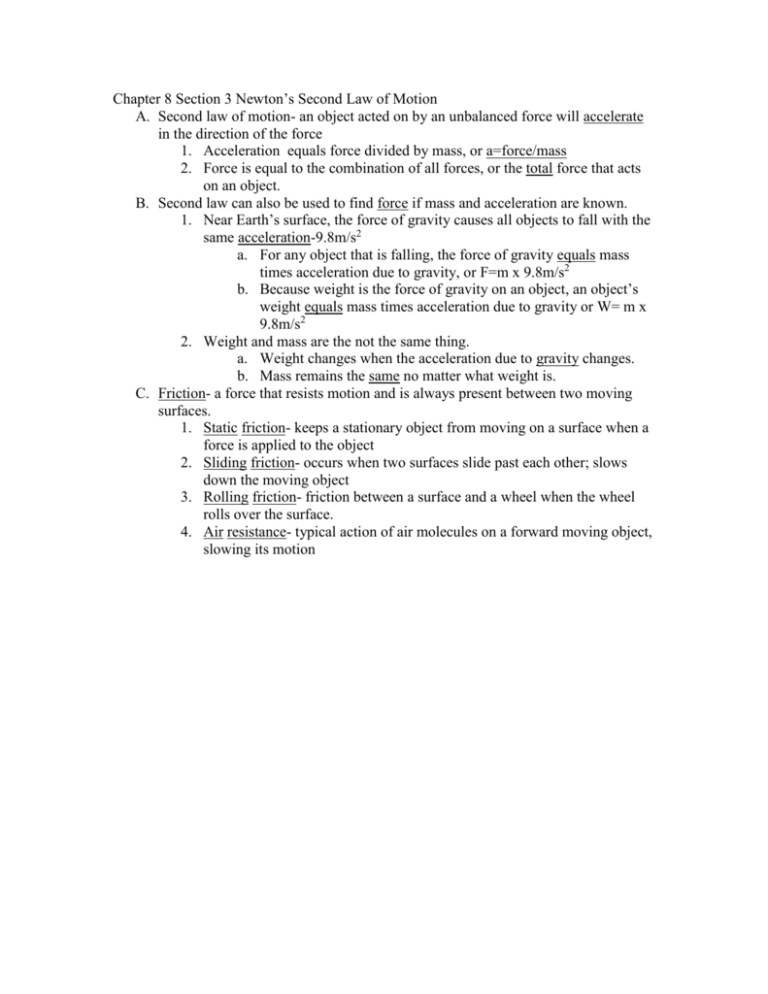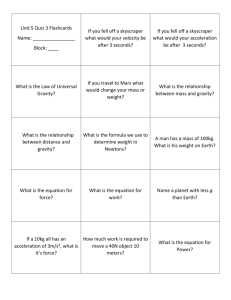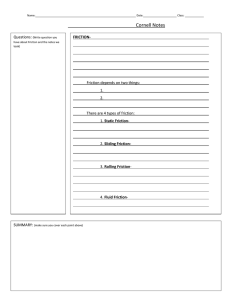Chapter 8 Section 3 Newton's Second Law of Motion
advertisement

Chapter 8 Section 3 Newton’s Second Law of Motion A. Second law of motion- an object acted on by an unbalanced force will accelerate in the direction of the force 1. Acceleration equals force divided by mass, or a=force/mass 2. Force is equal to the combination of all forces, or the total force that acts on an object. B. Second law can also be used to find force if mass and acceleration are known. 1. Near Earth’s surface, the force of gravity causes all objects to fall with the same acceleration-9.8m/s2 a. For any object that is falling, the force of gravity equals mass times acceleration due to gravity, or F=m x 9.8m/s2 b. Because weight is the force of gravity on an object, an object’s weight equals mass times acceleration due to gravity or W= m x 9.8m/s2 2. Weight and mass are the not the same thing. a. Weight changes when the acceleration due to gravity changes. b. Mass remains the same no matter what weight is. C. Friction- a force that resists motion and is always present between two moving surfaces. 1. Static friction- keeps a stationary object from moving on a surface when a force is applied to the object 2. Sliding friction- occurs when two surfaces slide past each other; slows down the moving object 3. Rolling friction- friction between a surface and a wheel when the wheel rolls over the surface. 4. Air resistance- typical action of air molecules on a forward moving object, slowing its motion





